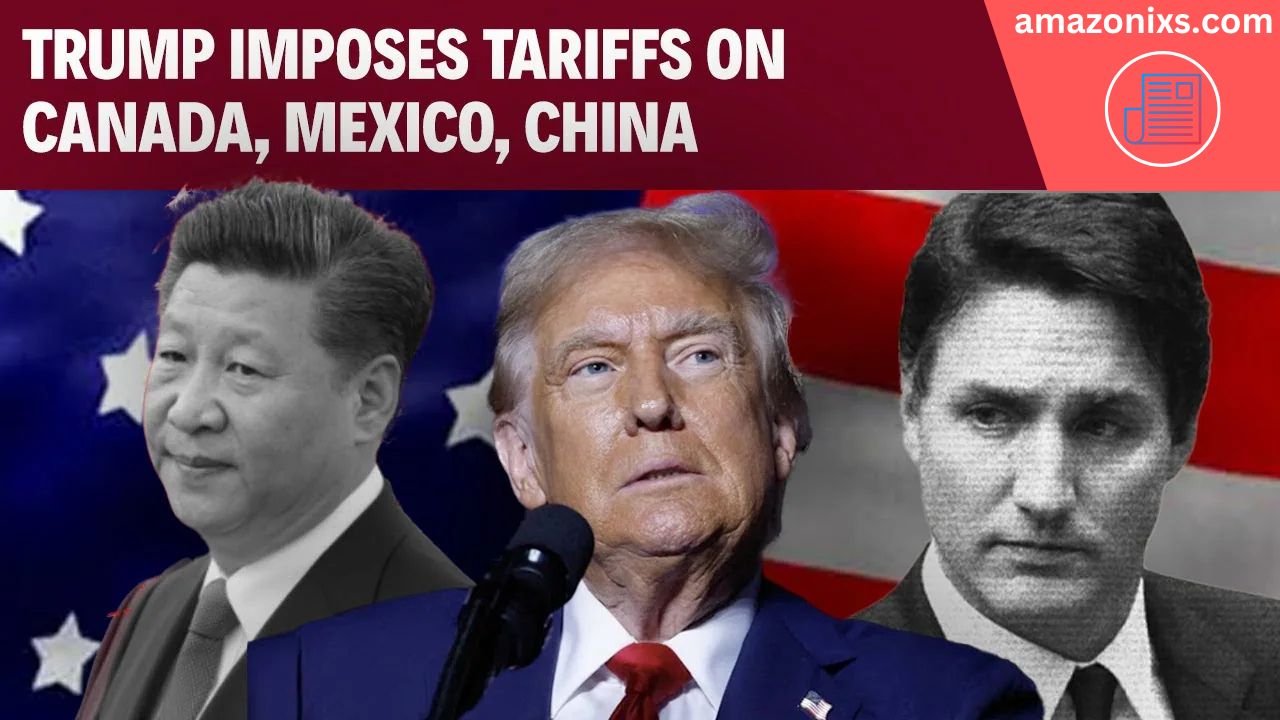Introduction: A Trade War Escalates
In a bold and controversial move, former U.S. President Donald Trump has imposed a 25% tariff on select products from Canada and China. This decision, aimed at protecting American industries, has quickly escalated into a retaliatory trade battle, with both Ottawa and Beijing responding in kind by slapping tariffs on U.S. goods.
The immediate impact has been strained diplomatic ties, economic uncertainty, and a shift in how global alliances and supply chains operate. Canadian Prime Minister Justin Trudeau did not hold back in his response, criticizing Trump for “destroying alliances” and stating that Canada can no longer rely on the U.S. for support.
With tensions rising and economic barriers forming, the world now faces a pressing question: What happens next?
Short-Term Economic Consequences
The immediate effects of these tariffs will be felt across industries in all three countries involved.
1. Higher Prices for Consumers
- With increased tariffs, imported goods will become more expensive for American, Canadian, and Chinese consumers.
- U.S. companies relying on Canadian raw materials (such as aluminum, lumber, and automotive parts) will either have to absorb the costs or pass them on to consumers.
- China’s exports to the U.S. in key sectors such as electronics and machinery will also become significantly more expensive.
2. Supply Chain Disruptions
- Many U.S. manufacturers depend on Canadian and Chinese components for production, especially in industries like automotive, technology, and agriculture.
- Companies will either need to find new suppliers or pay the increased costs, slowing down production and potentially leading to layoffs.
- Canadian and Chinese businesses that sell to the U.S. will lose market share, forcing them to pivot towards other trade partners.
3. Retaliatory Tariffs & Export Declines
- Canada and China have imposed their own tariffs on U.S. goods, making American exports less competitive in these markets.
- Key U.S. industries affected:
- Agriculture: American farmers, already struggling in recent years, will see reduced demand for crops like soybeans, wheat, and corn.
- Automotive sector: Cars made in the U.S. will become more expensive in Canada, reducing demand.
- Tech and electronics: U.S. companies selling in China (e.g., Apple, Tesla) could face difficulties if tariffs on their products increase.
Long-Term Consequences: A Shift in Global Trade
Beyond immediate economic impacts, these tariffs may fundamentally reshape global trade relations and alliances.
1. Strengthened Trade Ties Between Canada, China, and the EU
- With U.S. relations deteriorating, Canada and China will seek stronger trade agreements elsewhere.
- Canada may pivot towards Europe through agreements like CETA (Comprehensive Economic and Trade Agreement) to reduce reliance on the U.S.
- China may increase cooperation with the European Union and emerging markets to counterbalance its loss of U.S. trade.
2. U.S. Isolation in Global Trade
- Trump’s move reinforces the perception that the U.S. is an unreliable trade partner.
- If Canada and China successfully diversify their trade partners, the U.S. could lose influence in global markets.
- The World Trade Organization (WTO) might intervene, but enforcement could be difficult given the geopolitical power struggle.
3. Rising Inflation and Economic Slowdown in the U.S.
- Higher tariffs mean higher costs for businesses and consumers, which can drive inflation.
- If businesses cut production or lay off workers to compensate, economic growth may slow down, potentially leading to a recession.
- Stock markets may react negatively as investors fear trade instability and weakened corporate earnings.
4. Political Consequences in the U.S.
- With elections approaching, tariffs could become a key political issue.
- Industries hit hardest (such as agriculture and manufacturing) may pressure Congress to push back against Trump’s policies.
- If tariffs lead to economic hardship, public opinion may shift, influencing future trade policy decisions.
What Comes Next?
The situation remains fluid, but several potential scenarios could unfold:
- Negotiations & Trade Deals:
- If economic damage is severe, the U.S., Canada, and China may reopen negotiations to ease tensions and reach a compromise.
- A revised trade deal (similar to past U.S.-China agreements) could be brokered.
- Worsening Trade War:
- If tensions escalate, both Canada and China could increase tariffs further or impose additional restrictions on U.S. businesses.
- The U.S. might double down on tariffs, worsening economic instability.
- Shifts in Economic Power:
- If Canada and China successfully realign their trade networks, the U.S. could see a decline in its global economic dominance.
- Europe, India, and other emerging markets could step in to fill the trade gaps left by the U.S.
Conclusion: A Dangerous Gamble
Trump’s 25% tariff move is a high-stakes gamble with far-reaching consequences. While aimed at protecting American industries, the ripple effects are disrupting global trade, straining alliances, and increasing economic uncertainty.
Whether this leads to negotiations, further conflict, or a long-term shift in global trade dynamics remains to be seen. One thing is clear: the world economy is entering a new, unpredictable era—and the next steps taken by the U.S., Canada, and China will shape the future of international commerce.





